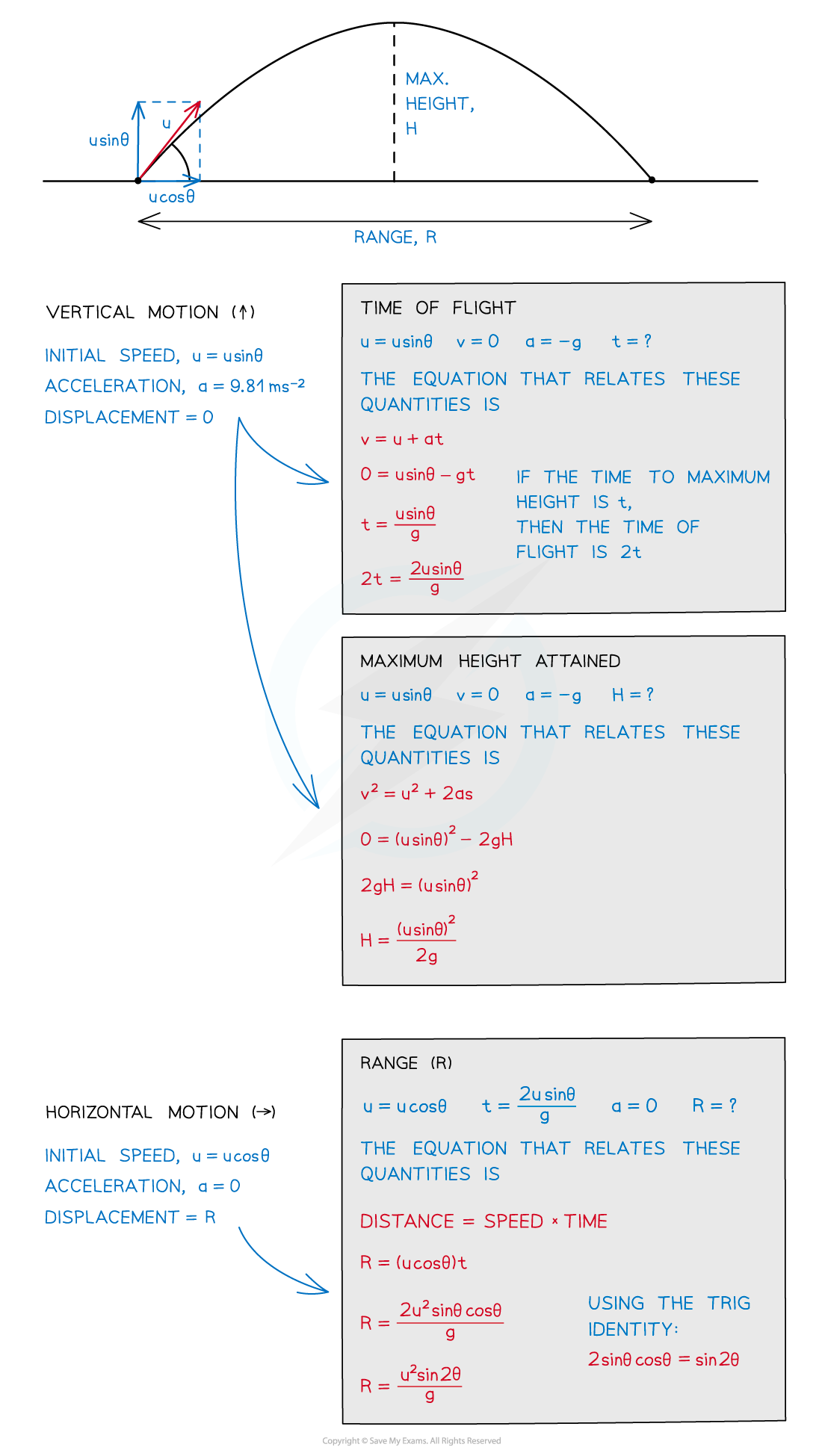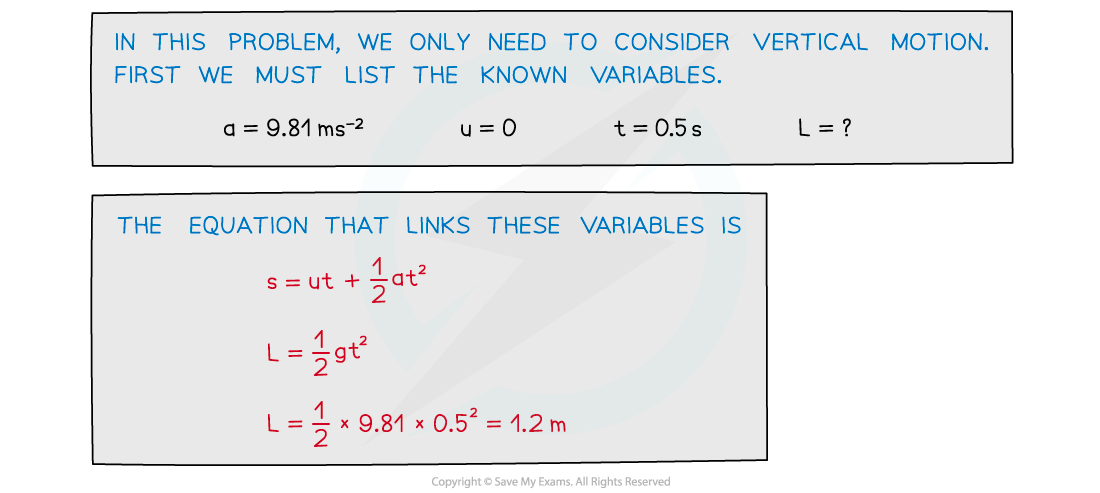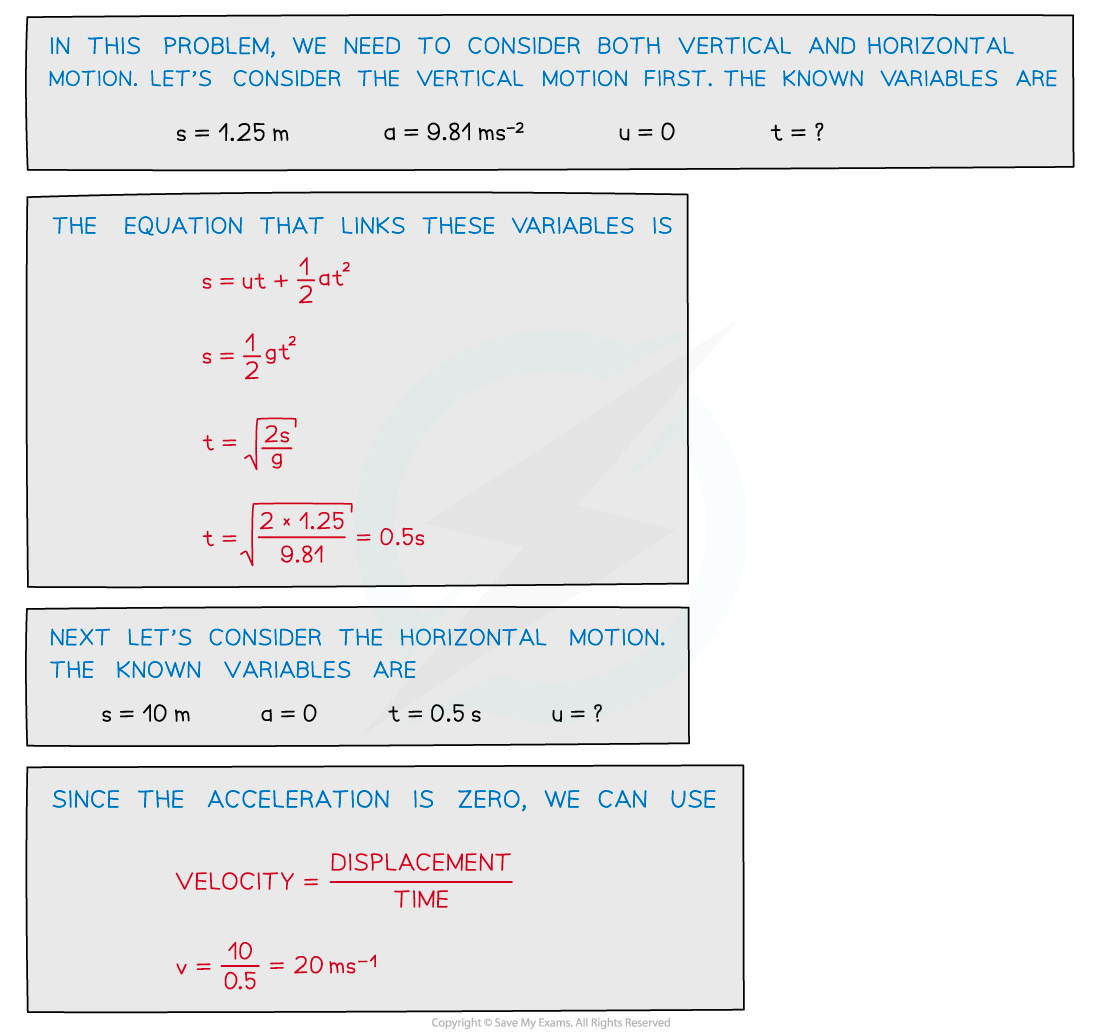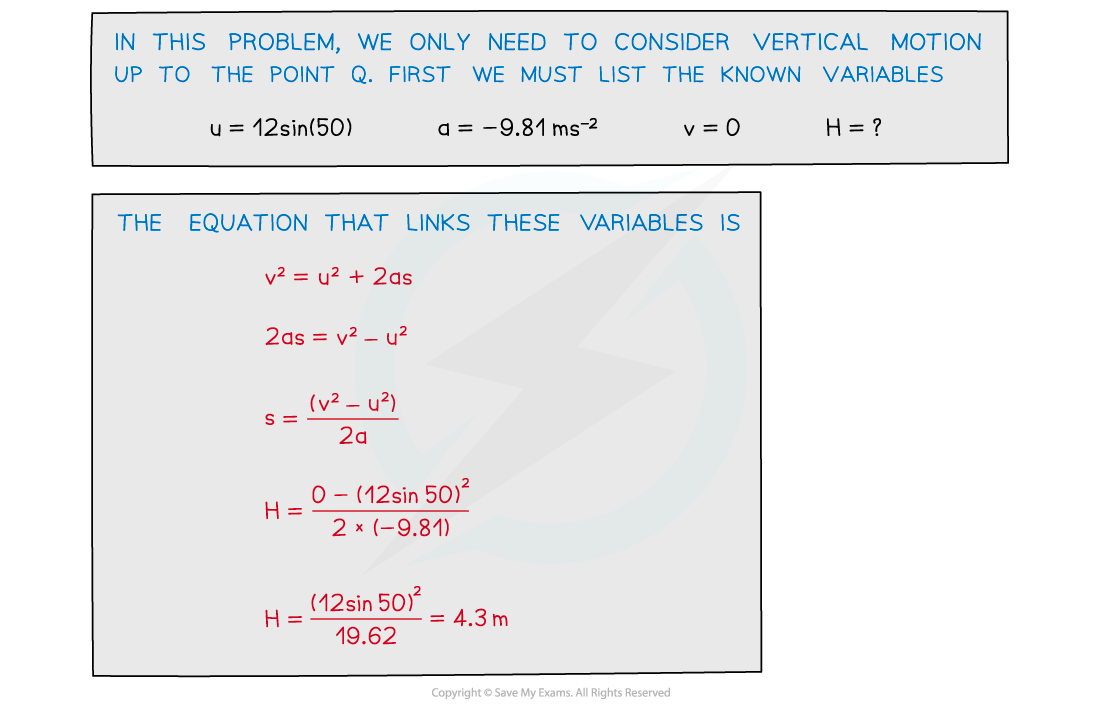Projectile Motion
- The trajectory of an object undergoing projectile motion consists of a vertical component and a horizontal component
- These need to be evaluated separately
- Some key terms to know, and how to calculate them, are:
- Time of flight: how long the projectile is in the air
- Maximum height attained: the height at which the projectile is momentarily at rest
- Range: the horizontal distance traveled by the projectile

How to find the time of flight, maximum height and range
Problems involving projectile motion
- There are two main considerations for solving problems involving two-dimensional motion of a projectile
- Constant velocity in the horizontal direction
- Constant acceleration in a perpendicular direction
- The only force acting on the projectile, after it has been released, is gravity
- There are three possible scenarios for projectile motion:
- Vertical projection
- Horizontal projection
- Projection at an angle
Worked Example
To calculate vertical projection (free fall)
A science museum designed an experiment to show the fall of a feather in a vertical glass vacuum tube.
The time of fall from rest is 0.5 s.

What is the length of the tube, L?

Worked Example
To calculate horizontal projection
A motorcycle stunt-rider moving horizontally takes off from a point 1.25 m above the ground, landing 10 m away as shown.
What was the speed at take-off? (ignoring air resistance)


Worked Example
To calculate projection at an angle
A ball is thrown from a point P with an initial velocity u of 12 m s-1 at 50° to the horizontal.
What is the value of the maximum height at Q? (ignoring air resistance)


Exam Tip
Make sure you don’t make these common mistakes:
- Forgetting that deceleration is negative as the object rises
- Confusing the direction of sin θ and cos θ
- Not converting units (mm, cm, km etc.) to metres
